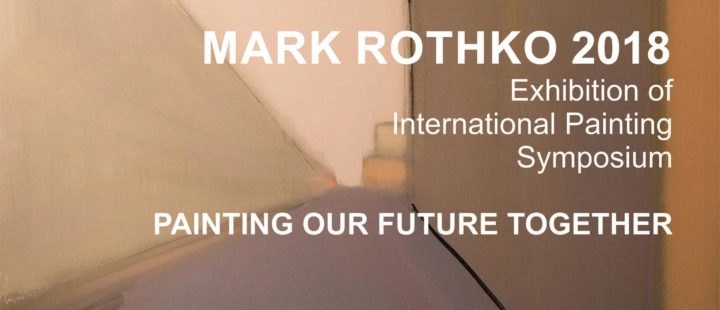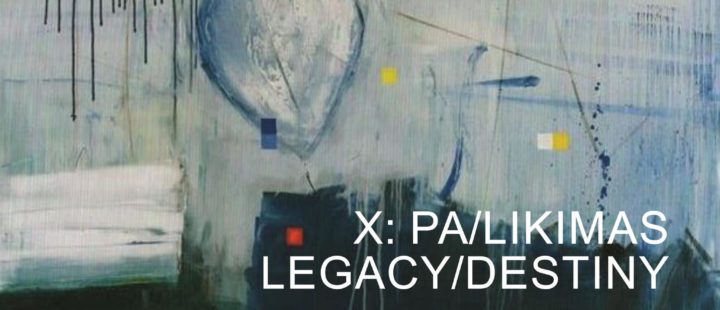Archive
COLOURS OF KURZEME / Group exhibition of artists from Talsi
- - 13.01.2019
Owing to its location in the west of Latvia, Kurzeme is probably less known in Daugavpils and Latgale than geographically closer regions such as Vidzeme or Sēlija… Perhaps the same is true with local knowledge about the art and artists of Kurzeme. Some art theorists have questioned the concept of a locally specific Kurzeme art… And yet, for over 30 years the name of an art group from Talsi, popularly known as the Talsi Bush Art Group, rings loud and clear across Latvian art space. ESTONIA 100 IN LATVIA
- - 13.01.2019
It is a pleasure to organise an exhibition of the Association of Estonian Printmakers at Daugavpils Mark Rothko Art Centre.
I have to admit that the artists taking part in this exhibition are almost the same as those who were active “in the old times”, i.e. before the general crisis in printmaking. But I am not saying that the old times were ideal. I became president of our association seven years ago, when there was a crisis both in the economy and in the medium of printmaking. During the course of these seven years, many things have changed in the art world, including the realm of printmaking. For example, printmaking has gained popularity and escalated to the second place among student candidates of the Art Academies in Riga and Vilnius. This is similar to the situation at our Estonian Art Institute in the Soviet times. EUROPEAN TAPESTRY FORUM
- - 13.01.2019
We are both proud and delighted to present and celebrate the fifth European tapestry show ARTAPESTRY5 – a contemporary showcase of tapestries from 12 European countries.
We are proud that European Tapestry Forum (ETF) during in only a short number of years, has succeeded in creating a platform for European tapestry artists and has established a position on the international tapestry scene. In 2001 a score of visionary tapestry weavers had a dream of promoting and improving the visibility of tapestry art in Europe and enabling it to reclaim its position as a challenging artform. ETF has gained valuable experience in the past 20 years by working with artists, curators and experts. DIARY OF DVINSK FORTRESS
- - 13.01.2019
During the years of visiting Mark Rothko Art Centre in Daugavpils, the surroundings and the mystery of the fortress have had an unconscious effect. Old architecture, especially the cultural layers that had formed over time, affect you through their multi-layered textures as if from the subtle depths of old frescoes. Everything smells like mature French cheese. When I feel this scent, it charms me by its texture. I cannot pass quietly through graffiti. Everything here compels me to take my camera and communicate with the surroundings through the whispers of graphics. This scent is captured while inhaling the smell of intercultural layers of old barracks and buildings. SILVA LINARTE
- - 13.01.2019
SCENES FROM THE SOUL
Delicate, mysterious and sensitive painting, laconic in terms of language yet deep when it comes to emotional experience, which shifts between joy and love, sadness and tragedy, and leads to reflection about eternity in nature and one’s immediate surroundings. Art that mesmerises with an interplay of light and dark – amidst faint outlines of objects, flowers or drapes, barely traceable in the half-light, an occasional burst of brilliant light – a ray of sunshine or a moonbeam highlighting a silhouette, sending one away from reality and into a world of illusion. Painting with smooth transitions where the subject is at once important and not, while the way it is conveyed remains ever essential. A mysterious and enchanting world, expressed in half-words – amidst flashes of light and dark both indoors and out in the open. Daugavpils. Music
- - 04.11.2018
In the frame of the 7th Music and Arts Festival “Daugavpils ReStArt 2018”, photo studio “Ezerzeme – F” will offer all locals and city guests a photo exhibition “Daugavpils. Music”, which will be available at Daugavpils Mark Rothko Art Centre. International Painting Symposium Mark Rothko 2018
- - 04.11.2018
‘Painting Our Future Together’
On the occasion of the European Cooperation Day 2018, the Latvia-Lithuania-Belarus Cross-Border Cooperation Programme and Daugavpils Mark Rothko Art Centre present the travelling exhibition “Painting Our Future Together” showcasing the artwork by 10 international artists who have drawn inspiration from the art of the world-renowned artist Mark Rothko and from the charming atmosphere of his birthplace during the 14th international painting symposium “Mark Rothko 2018” in Daugavpils, Latvia. CHAGALL ONE AND TWO
- - 04.11.2018
It is worth mentioning that exhibitions representing a dialogue of different artists that includes their existence in different environments as well as living in different periods attract considerable attention of culture consumers. The dialogue, like a new Enlightenment, allows us to see from a new perspective things that we consider we have experienced and know very well. We have this feeling of novelty of perception and space-time dimension at the painting exhibition of Marc Chagall (1887–1985) and Lithuanian artist Jonas Daniliauskas (b. 1950) Chagall One and Two. X: PA/LIKIMAS (LEGACY/DESTINY)
- - 04.11.2018
X: PA/LIKIMAS is a project inviting artists to take an artistic look at the history of the centenary of Lithuanian independence – to explore its development and underline the key moments of this period, that is, to identify and highlight the historical events, dates and achievements of Lithuania, which constitute our legacy and by their significance today determine our destiny – to be free and independent. MARUTA RAUDE
- - 04.11.2018
MAXIMALISM FOREVER
Maruta Raude’s solo exhibition ALWAYS ALL OUT is a retrospective with select items from the artist’s previous shows “…and then they went out to the river…”, “Perfect place for you”, “First day or Monday”, “Four mermaids in a red sea” and “Totems” with the addition of assorted pieces she created during the international ceramic art symposium “Ceramic Laboratory” in Daugavpils. 









